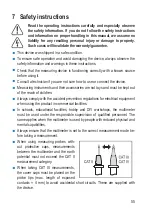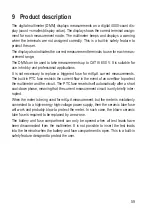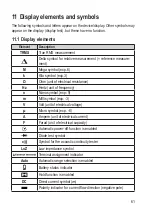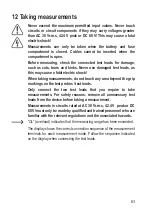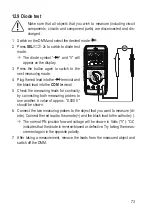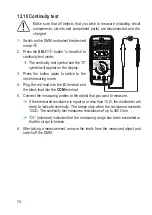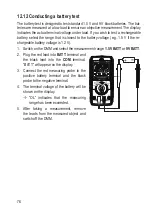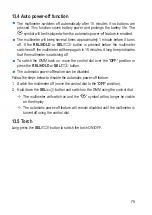
68
12.6 Taking current measurements
Never exceed the maximum permitted input values. Never touch
circuits or circuit components if they may carry voltages greater
than AC 30 Vr.m.s, 42.4 V peak or DC 60 V. This may cause a fatal
electric shock!
The voltage in the measured circuit must not exceed 600 V.
Measurements greater than 6 A must only be made for a maximum
of 30 seconds in 15-minute intervals.
Always start each measurement using the largest measuring range,
and then switch to a smaller range if necessary. Always disconnect
the circuit before connecting the multimeter and changing the
measurement mode. All measurement ranges are protected against
overload.
Do not measure any currents above 10 A in the A range or currents
above 400 mA in the mA/µA range, as this will trigger the fuses.
The µA/mA input has a resettable PTC fuse, meaning that you do
not need to replace the fuse in the event of an overload.
Current measurements in the mA/µA range should be made as quickly as
possible. Avoid taking measurements for prolonged periods. Due to the
PTC technology, increasing currents/prolonged measurements cause the
protective components in the circuit to increase in temperature. This in-
creases the internal resistance and restricts the current flow. Bear this in
mind when taking a series of measurements.
When the meter is being used for mA/µA measurement, but the meter is
mistakenly connected to a high-energy high-voltage power supply, then
the ceramic tube fuse will work and probably blow to protect the meter. In
such case, the blown ceramic tube fuse is required to be replaced by a
new one.
An optical and acoustic alarm is triggered when the measurement range is ex-
ceeded.
If the PTC fuse is triggered (the measurement steadily decreases, “OL” appears
on the display or the alarm is triggered), stop the measurement and switch off
the DMM. Wait for approximately 5 minutes for the resettable fuse to cool down
and reset itself.


